Celebration takes on a profound meaning during Día de Muertos in San Miguel de Allende, where the ofrenda, or altar, becomes a vibrant centerpiece of remembrance. You will find these altars adorned with marigold flowers, candles, and photographs, each element carefully chosen to honor loved ones and guide their spirits back. In this historic city, the tradition blends indigenous roots with modern creativity, offering a unique way to connect with Mexican culture. Discover how these altars celebrate life, death, and the enduring bonds of family in one of Mexico’s most enchanting destinations.
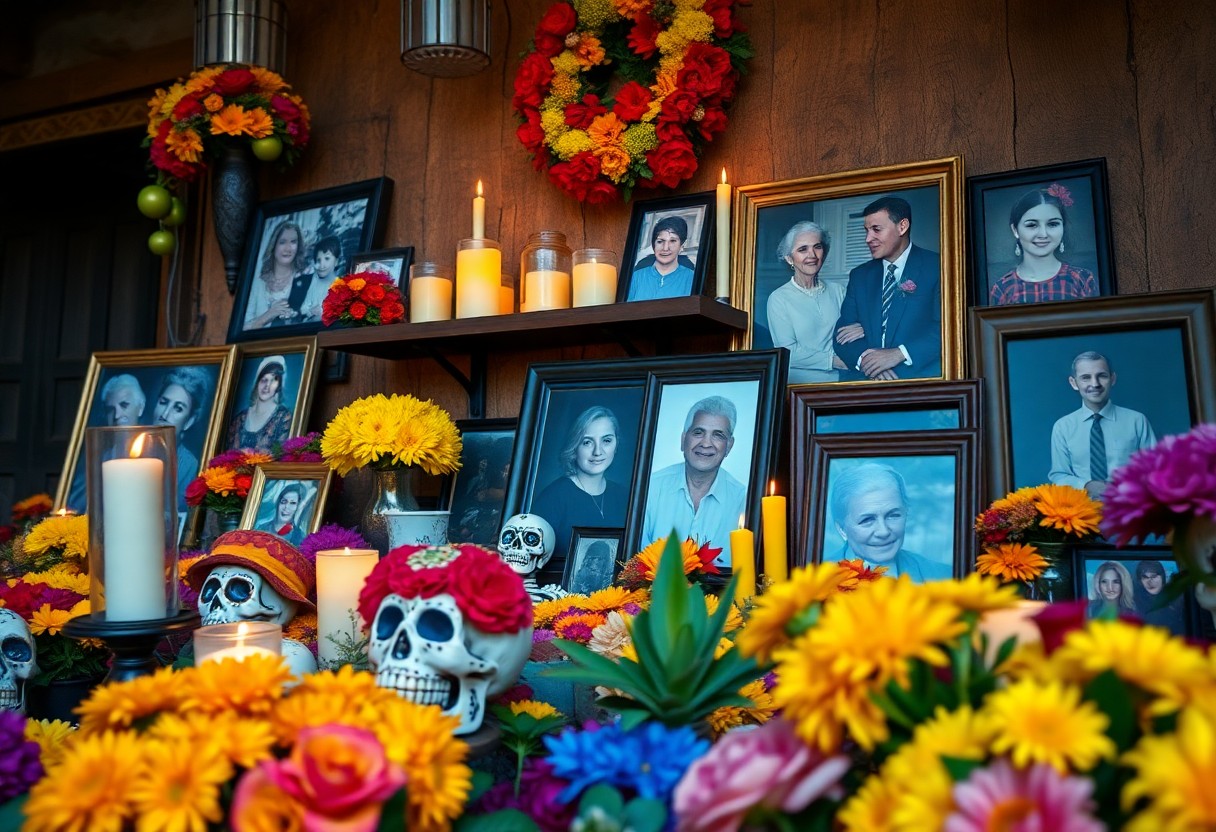
The Importance of the Ofrenda in Mexican Culture
While the ofrenda may appear as a simple altar, it holds deep cultural and spiritual significance in Mexican traditions. You create an ofrenda to honor your loved ones, believing their spirits return during Día de Muertos to enjoy the offerings you prepare. These altars are filled with marigold flowers, candles, incense, and favorite foods of the departed, symbolizing love, memory, and the connection between life and death. In San Miguel de Allende, the ofrenda becomes a vibrant centerpiece of the celebration, reflecting the city’s rich heritage and the enduring bond between the living and the deceased.
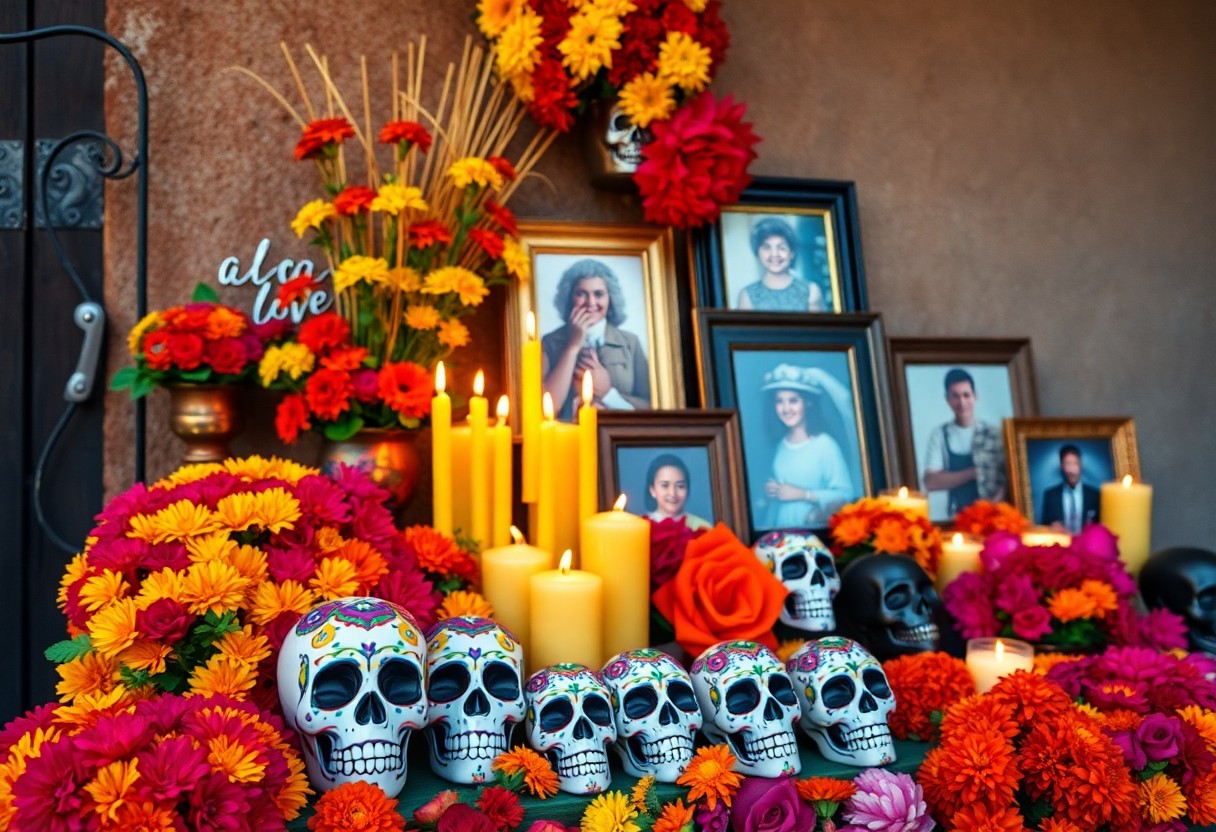
The Origins of the Ofrenda
A tradition rooted in ancient history, the ofrenda traces its origins to pre-Hispanic civilizations like the Aztecs, who honored their deceased through rituals and offerings. When the Spanish arrived, they introduced Catholic practices, blending them with indigenous customs to create the Día de Muertos celebration. Today, the ofrenda stands as a symbol of unity between life and death, reflecting the belief that spirits return to visit the living. In San Miguel de Allende, this tradition thrives, offering you a chance to witness a cultural fusion that has endured for centuries.
How the Ofrenda Has Evolved Over the Years
Before, ofrendas were simple altars built in homes or cemeteries, reflecting regional traditions and family customs. Over time, the ofrenda has adapted to modern influences while keeping its core purpose intact. In San Miguel de Allende, you can now see altars blending traditional elements like marigolds and candles with contemporary art and design. Despite these changes, the ofrenda remains a powerful symbol of connection between the living and the dead. Its evolution highlights the resilience of Mexican culture, ensuring that the tradition continues to thrive in both private and public spaces.
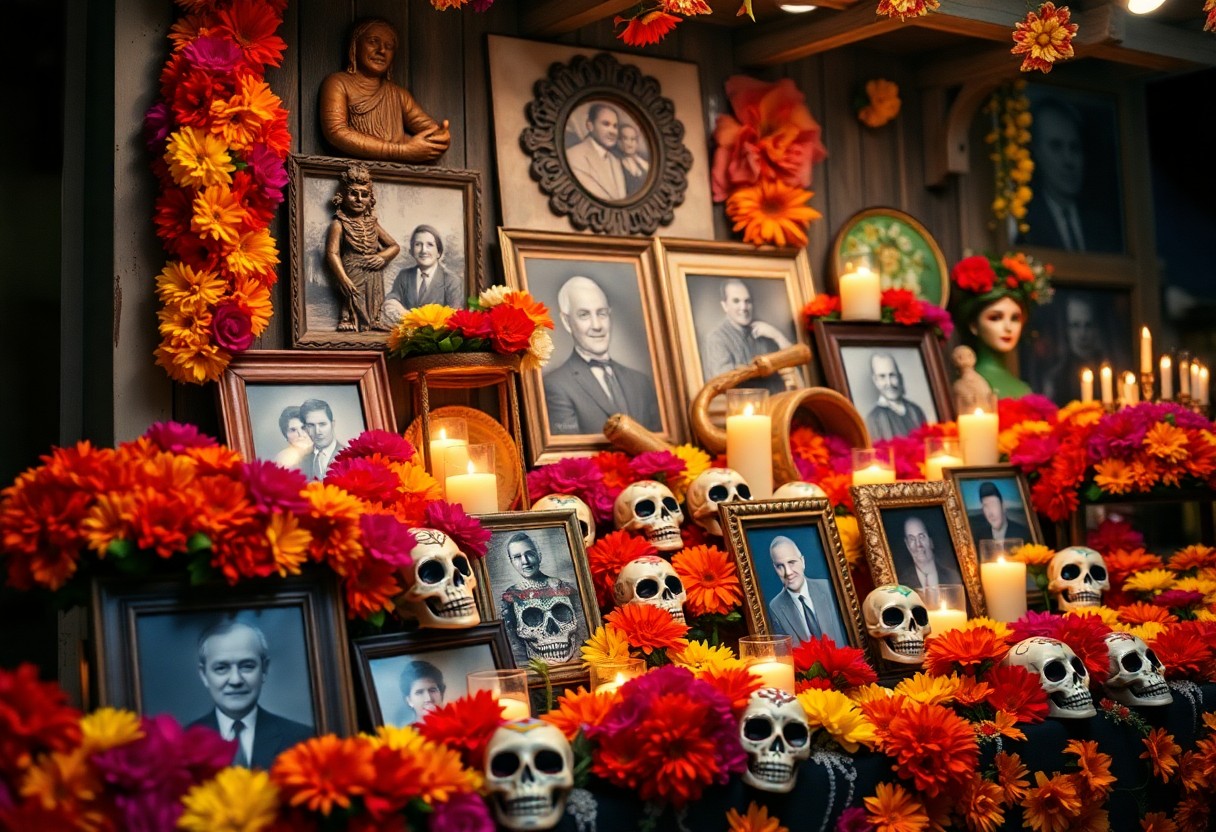
Essential Elements of a Day of the Dead Altar
Some key items define a traditional Day of the Dead altar, each holding deep meaning. Photographs of the deceased honor their memory, while cempasúchil (marigold flowers) guide spirits with their vibrant color and scent. Candles light the way for souls, and incense (copal) purifies the space. You’ll often find food and drinks, like pan de muerto and tequila, to nourish returning spirits. Salt symbolizes purification, and sugar skulls represent life’s cycle. Finally, papel picado adds a festive touch, reminding us of life’s fragility. In San Miguel de Allende, these elements come together to create altars that are both personal and deeply cultural.
Where to See Altars in San Miguel de Allende
If you want to experience the vibrant spirit of Día de Muertos, San Miguel de Allende offers some of the most stunning ofrendas. Start at the Jardín Principal, where public altars and performances bring the tradition to life. Visit local art galleries and cultural centers like Casa de la Cultura and La Aurora, where artists blend traditional and modern elements in their displays. These spaces highlight the city’s rich culture and history, making your visit unforgettable. Plan your trip to see these altars and immerse yourself in the heart of this cherished Mexican tradition.
Embrace the Tradition!
Clearly, the Day of the Dead in San Miguel de Allende offers you a unique opportunity to connect with a centuries-old tradition. By visiting the city’s vibrant ofrendas, you witness a celebration that blends indigenous roots with Catholic influences, creating a powerful tribute to life and death. The altars, adorned with marigolds, candles, and pan de muerto, invite you to reflect on the beauty of memory and the enduring bond between the living and the departed. Embrace this tradition to experience the heartfelt spirit of Mexican culture firsthand.
Summing up
Ultimately, the Day of the Dead ofrenda in San Miguel de Allende offers you a profound way to connect with Mexican traditions and celebrate life. By visiting the city during this time, you witness the vibrant altars adorned with marigolds, candles, and personal mementos, each telling a story of love and remembrance. San Miguel de Allende’s streets and plazas transform into a living tribute to this cultural heritage, inviting you to experience the beauty of honoring the past while embracing the present. This celebration reminds you of the enduring bond between the living and the departed.
FAQ
What is the significance of the ofrenda in San Miguel de Allende during Día de Muertos?
The ofrenda is a central element of Día de Muertos in San Miguel de Allende. It serves as a way to honor and remember loved ones who have passed away. Families create altars with offerings like food, drinks, and photographs to welcome the spirits of the deceased. The ofrenda symbolizes the connection between life and death, blending indigenous traditions with Catholic influences.
What are the key elements found on a Day of the Dead altar in San Miguel de Allende?
A typical Day of the Dead altar in San Miguel de Allende includes several crucial elements. These are photographs of the deceased, marigold flowers (cempasúchil), candles, incense (copal), traditional foods like pan de muerto, salt, sugar skulls (calaveras), and papel picado. Each item holds symbolic meaning, such as guiding spirits, purifying the space, or representing the cycle of life and death.
Where can visitors see Day of the Dead altars in San Miguel de Allende?
Visitors can see Day of the Dead altars in several locations across San Miguel de Allende. Key spots include the Jardín Principal, which features public ofrendas and performances, local art galleries, Casa de la Cultura, and La Aurora, an art and design center. These places showcase both traditional and contemporary altars, offering a rich cultural experience during the celebration.
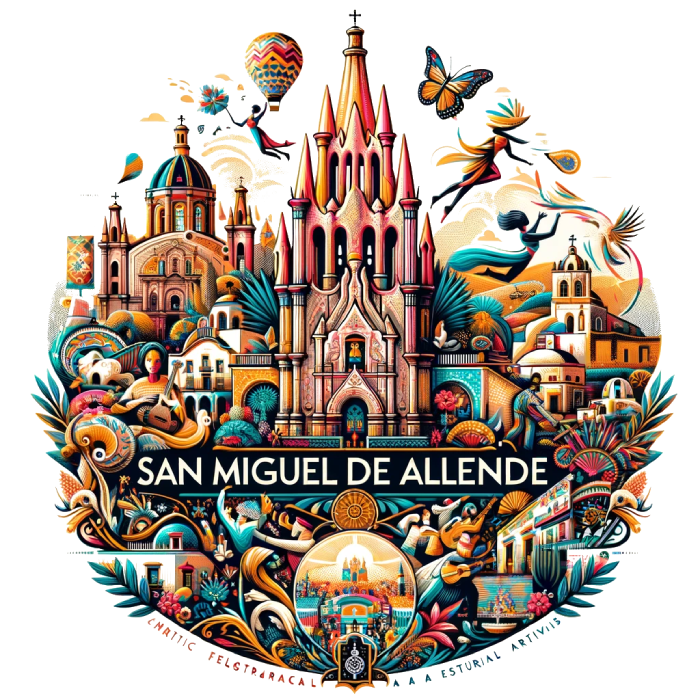


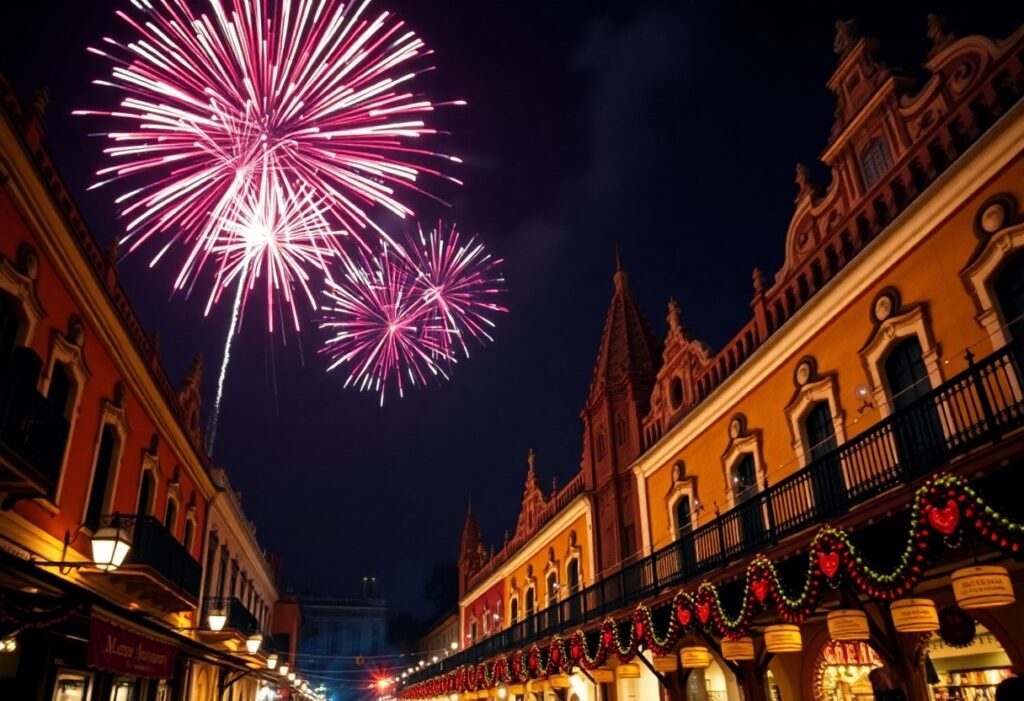
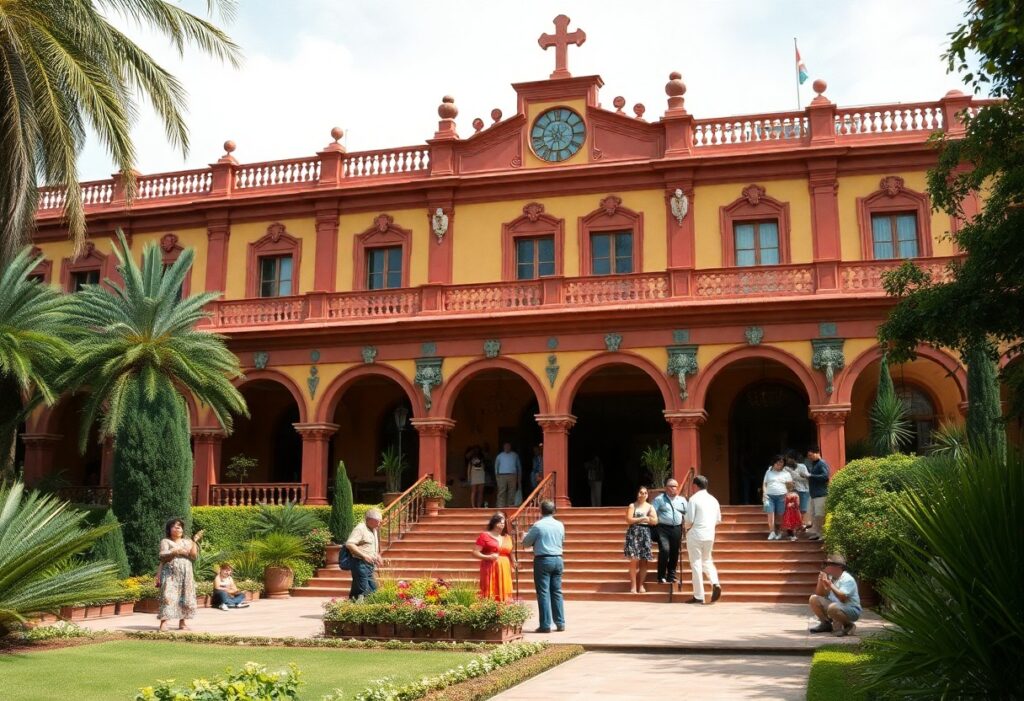
I love how you’ve captured the essence of Día de Muertos and the central role of the ofrenda in San Miguel de Allende. It’s fascinating to see how the celebration intertwines the joy of remembrance with a deep respect for the cycle of life and death. I remember visiting a similar celebration in Oaxaca a few years back, and the atmosphere was electric with the vibrant colors of marigolds and the flickering light of candles. Each altar I came across seemed to tell its own story, reflecting the personalities and favorite things of those who had departed.
I really appreciate you sharing your experience visiting a celebration in Oaxaca. That place has such a rich tapestry of traditions, doesn’t it? The marigolds and candles are such a beautiful representation of life and death coming together. It’s almost as if the vibrant colors are meant to remind us of the joy that can be found in remembering our loved ones while still honoring the sadness of their absence.
The vibrant depiction of the ofrenda and its significance during Día de Muertos in San Miguel de Allende resonates deeply with me. It is fascinating how the elements of the altar—marigold flowers, candles, photographs—are not merely decorative but serve as meaningful symbols that bridge the earthly realm with the spiritual. Each item tells a story, transforming the altar into a canvas of remembrance and love.
You really captured the essence of the ofrenda beautifully. The way those elements come together to tell a story is such a special part of Día de Muertos. Each marigold, candle, and photo feels like it’s woven with memories, doesn’t it?
The portrayal of the ofrenda in your post beautifully encapsulates its essence as a living tapestry of memory and emotion. As someone who has experienced Día de Muertos in various places, I find that each altar tells a unique story, infused with personal touches that vary from family to family. The incorporation of marigold flowers, or cempasúchil, is particularly poignant; their vibrant color and scent are said to attract the spirits back to the realm of the living.
It’s fascinating to hear about your experiences with Día de Muertos in various places. Each altar truly is like a personal narrative, woven together with threads of memory and love from those who create it. The idea that every family puts their own spin on the ofrenda really highlights the deep connections we have to our loved ones — how we choose to honor them can reveal so much about our relationships, our traditions, and even our cultural backgrounds.
You’ve captured a key aspect of Día de Muertos that resonates with so many who participate in this rich tradition. It’s fascinating how each altar becomes a personal narrative, weaving together stories, memories, and connections that are unique to every family. The way families curate their ofrendas is such a reflection of who they are and the lives they honor.
You really hit on something powerful with the concept of personal narratives in altar building. Each family’s ofrenda is almost like a tangible tapestry of their history, filled with not just photos and objects, but emotions and remembrance. It’s interesting how the act of creating these alters can be a healing process for families, allowing them to collectively honor their loved ones while also processing their own grief.
I recently came across an insightful piece that beautifully explores a cultural gem in San Miguel de Allende, highlighting how places like this enrich our understanding of traditions and personal stories.
‘Discover El Nigromante: A Cultural Treasure in San Miguel de Allende’
https://fallinginlovewithsanmiguel.com/el-nigromante-a-cultural-treasure-in-san-miguel/.
It’s great to hear your thoughts on the ofrenda; it really does become a canvas for memories, doesn’t it? Each detail tells such a personal story, and I love how you mentioned the marigolds. Their vibrant color and scent truly create a bridge between the living and the departed. It’s fascinating how that floral element varies regionally, too. In some places, families might incorporate local flowers or even handmade crafts, giving the altar its own personality. It’s a beautiful reminder that while we all come together to honor those we’ve lost, each of us brings our own memories and traditions to the table. Have you noticed any particular elements that resonate more in certain places?
“To explore more about the rich traditions and meanings behind Día de Muertos altars, check out this insightful resource!”
https://fallinginlovewithsanmiguel.com/seasonal-and-events
The portrayal of the ofrenda in your post beautifully captures its essence as a blend of remembrance and celebration. Personally, I find the integration of marigold flowers—the “cempasúchil”—especially poignant. Their vibrant yellow-orange color and distinct scent are believed to attract the spirits back to the living world, which adds a magical dimension to the altar.
I completely get what you mean about the marigold flowers, or “cempasúchil.” There’s something really captivating about how they not only look but also play such a crucial role in guiding spirits back. Those golden hues pop against the more subdued colors of the other offerings, and they create this inviting atmosphere on the altar.
Your reflection on the ofrenda truly captures its essence as a bridge between the living and the deceased. It’s fascinating how these altars not only serve as a tribute but also as a means to keep family stories and traditions alive. I remember visiting an ofrenda in a small town in Mexico, where the altar included handwritten notes from family members sharing their favorite memories of those they honored. It really illustrated the profound role of memory in our lives, reminding us that while we grieve, we also celebrate the richness of those connections.
Your experience visiting an ofrenda in Mexico really highlights an important aspect of these altars that often gets overlooked: the personal stories and shared memories that breathe life into them. Each item placed on the altar—whether it’s a favorite food, a photograph, or even a simple note—becomes a tangible thread connecting us to our loved ones. It’s interesting how the act of remembrance can turn into a celebration, blending both sorrow and joy in a way that feels incredibly authentic.
I love how you captured the essence of Día de Muertos in San Miguel de Allende. The tradition of the ofrenda truly embodies a beautiful mix of remembrance and celebration, and it’s fascinating to see how it fuses indigenous practices with contemporary expressions.
You really hit the nail on the head with that observation. The ofrenda really does feel like a vibrant conversation between the past and the present. It’s like the ultimate family reunion where instead of awkward small talk, you share some favorite snacks and stories about your dearly departed.
The significance of the ofrenda truly encapsulates the intersection of memory, culture, and familial connection in Mexican traditions. I’ve always been struck by the way these altars serve as tangible reminders of those we’ve lost, transforming grief into a celebration of life. The inclusion of favorite foods and personal items really emphasizes the idea of welcoming spirits back into our lives, creating a rich narrative of remembrance.
You’ve really captured what makes the ofrenda so special. It’s fascinating to see how those personal items and favorite foods weave a story between the living and the departed. It’s like each detail holds a piece of the person being honored—reminding us that they’re never truly gone but continue to be part of our lives in a different way.
You’ve captured the essence of the ofrenda beautifully. It’s interesting to think about how these altars become more than just memorials; they actively engage with the living. The personal items and favorite foods aren’t just nostalgic—they represent the ongoing relationship between the living and the dead. It raises questions about how we, in our own cultures, structure our connections to memory and loss.
“To explore more about the beautiful traditions of the ofrenda and how to create your own meaningful tribute, check out this guide!”
https://fallinginlovewithsanmiguel.com/food-and-drink
Your insights on the ofrenda truly capture its essence beautifully. It’s fascinating how these altars serve not just as memorials, but as living connections to our loved ones. The way families incorporate favorite foods and personal items speaks volumes about how we view death not just as an end, but as part of a larger narrative of life and love.
Thank you for your thoughtful reflection! If you’re interested in exploring more about the beauty and significance of ofrendas, check out this insightful resource that dives deeper into these cherished traditions.
https://fallinginlovewithsanmiguel.com/food-and-drink